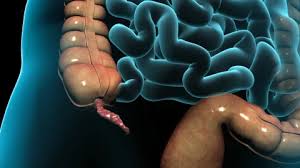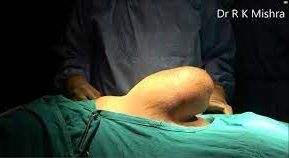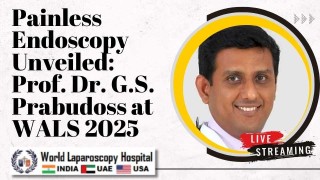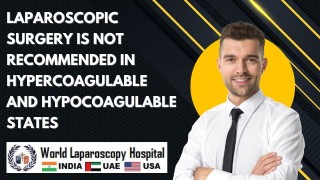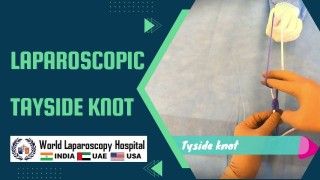Laparoscopic Heller's myotomy with appendectomy for optimal outcomes
Add to
Share
1,283 views
Report
2 years ago
Description
Introduction: Laparoscopic surgery has revolutionized the field of surgical interventions, offering numerous advantages over traditional open procedures. One notable application of laparoscopy is the combined approach of Heller's myotomy and appendectomy, which allows for the simultaneous treatment of achalasia and appendicitis. This essay explores the benefits of combining these procedures through laparoscopic techniques, highlighting the precision and efficiency that can be achieved and the resulting optimal outcomes. Body: Laparoscopic Heller's Myotomy: Heller's myotomy is a surgical procedure performed to treat achalasia, a condition characterized by impaired esophageal motility and difficulty in swallowing. In a laparoscopic Heller's myotomy, small incisions are made in the abdomen to access the esophagus and lower esophageal sphincter (LES). Through these incisions, the surgeon carefully divides the muscles of the LES, allowing for improved passage of food into the stomach. Laparoscopic Appendectomy: Appendectomy is a common surgical procedure performed to remove an inflamed or infected appendix. Laparoscopic appendectomy involves making small incisions in the abdomen, through which a laparoscope and specialized instruments are inserted. The appendix is then carefully detached and removed, minimizing the risk of complications associated with an inflamed appendix. Benefits of Combined Laparoscopic Heller's Myotomy with Appendectomy: a) Simultaneous treatment: Combining Heller's myotomy and appendectomy through laparoscopy allows for the simultaneous treatment of two separate conditions, optimizing the use of operating room time and reducing the need for multiple surgeries. This approach is particularly beneficial for patients who require treatment for both achalasia and appendicitis. b) Minimally invasive approach: Laparoscopic techniques used in Heller's myotomy and appendectomy result in smaller incisions, reduced post-operative pain, shorter hospital stays, and faster recovery compared to open procedures. Patients benefit from decreased scarring and a quicker return to normal activities. c) Precision and visualization: The use of laparoscopic instruments and high-definition imaging systems provides surgeons with enhanced visualization and precise control during the combined procedure. This enables accurate identification and division of the LES muscles during Heller's myotomy and meticulous removal of the appendix during the appendectomy. d) Reduced risk of complications: Laparoscopic procedures are associated with a lower risk of complications such as wound infections, hernias, and adhesions. By utilizing a minimally invasive approach, combined laparoscopic Heller's myotomy with appendectomy helps minimize post-operative complications and promotes better patient outcomes. The description provided highlights the combination of laparoscopic Heller's myotomy with appendectomy, showcasing the benefits of this approach for achieving optimal outcomes. Laparoscopic Heller's myotomy is a surgical procedure performed to treat achalasia, a condition characterized by difficulty swallowing. By dividing the muscles of the lower esophageal sphincter, laparoscopic Heller's myotomy improves the passage of food into the stomach. Concurrently, laparoscopic appendectomy involves the removal of an inflamed appendix through small incisions in the abdomen. Combining these procedures through laparoscopy offers several advantages. First, it allows for the simultaneous treatment of achalasia and appendicitis, optimizing operating room time and reducing the need for multiple surgeries. This approach is particularly beneficial for patients who require treatment for both conditions. Second, the minimally invasive nature of laparoscopic techniques results in smaller incisions, reduced post-operative pain, shorter hospital stays, and faster recovery times compared to traditional open procedures. Patients also experience decreased scarring and a quicker return to their normal activities. Precision and visualization are key benefits of the combined laparoscopic approach. Surgeons can utilize laparoscopic instruments and high-definition imaging systems to achieve enhanced visualization and precise control during the procedure. This enables accurate identification and division of the lower esophageal sphincter muscles in Heller's myotomy and meticulous removal of the inflamed appendix during the appendectomy. By minimizing trauma and ensuring precise surgical maneuvers, the risk of complications is reduced. Overall, the combination of laparoscopic Heller's myotomy with appendectomy exemplifies a refined and efficient approach to surgical interventions. The description emphasizes the advantages of this technique, including simultaneous treatment, minimally invasive approach, enhanced precision, and reduced risks of complications. By embracing the benefits of laparoscopy, surgeons can provide patients with optimal outcomes, improved recovery, and overall enhanced patient satisfaction. The description provided highlights the combination of laparoscopic Heller's myotomy with appendectomy, showcasing the benefits of this approach for achieving optimal outcomes. Laparoscopic Heller's myotomy is a surgical procedure performed to treat achalasia, a condition characterized by difficulty swallowing. By dividing the muscles of the lower esophageal sphincter, laparoscopic Heller's myotomy improves the passage of food into the stomach. Concurrently, laparoscopic appendectomy involves the removal of an inflamed appendix through small incisions in the abdomen. Combining these procedures through laparoscopy offers several advantages. First, it allows for the simultaneous treatment of achalasia and appendicitis, optimizing operating room time and reducing the need for multiple surgeries. This approach is particularly beneficial for patients who require treatment for both conditions. Second, the minimally invasive nature of laparoscopic techniques results in smaller incisions, reduced post-operative pain, shorter hospital stays, and faster recovery times compared to traditional open procedures. Patients also experience decreased scarring and a quicker return to their normal activities. Precision and visualization are key benefits of the combined laparoscopic approach. Surgeons can utilize laparoscopic instruments and high-definition imaging systems to achieve enhanced visualization and precise control during the procedure. This enables accurate identification and division of the lower esophageal sphincter muscles in Heller's myotomy and meticulous removal of the inflamed appendix during the appendectomy. By minimizing trauma and ensuring precise surgical maneuvers, the risk of complications is reduced. Overall, the combination of laparoscopic Heller's myotomy with appendectomy exemplifies a refined and efficient approach to surgical interventions. The description emphasizes the advantages of this technique, including simultaneous treatment, minimally invasive approach, enhanced precision, and reduced risks of complications. By embracing the benefits of laparoscopy, surgeons can provide patients with optimal outcomes, improved recovery, and overall enhanced patient satisfaction. Overall, the combination of laparoscopic Heller's myotomy with appendectomy exemplifies a refined and efficient approach to surgical interventions. The description emphasizes the advantages of this technique, including simultaneous treatment, minimally invasive approach, enhanced precision, and reduced risks of complications. By embracing the benefits of laparoscopy, surgeons can provide patients with optimal outcomes, improved recovery, and overall enhanced patient satisfaction. Conclusion: The combination of laparoscopic Heller's myotomy and appendectomy offers a compelling approach to the simultaneous treatment of achalasia and appendicitis. By leveraging the precision, efficiency, and minimally invasive nature of laparoscopic techniques, surgeons can provide optimal outcomes for patients. The advantages of combining these procedures include reduced operating time, smaller incisions, faster recovery, and decreased risks of complications. As the field of laparoscopic surgery continues to advance, the combination of procedures like Heller's myotomy and appendectomy represents a promising avenue for achieving enhanced patient care, improved surgical outcomes, and increased patient satisfaction.
Similar Videos

